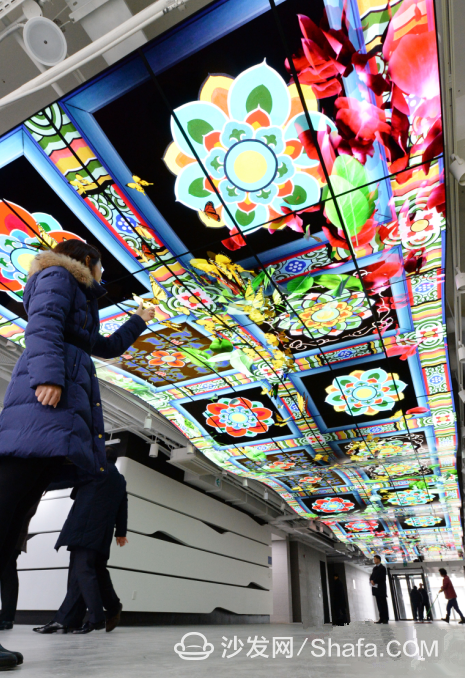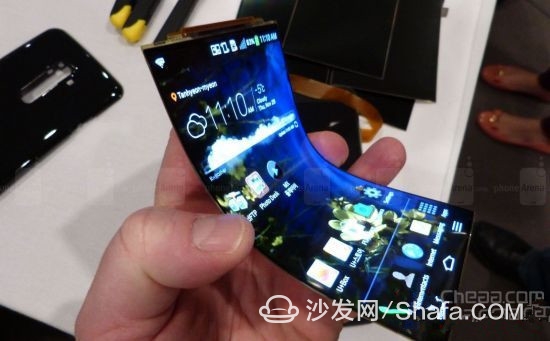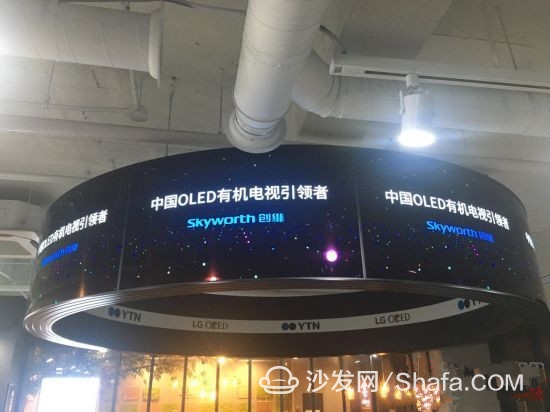LCD, revolutionized the CRT, squeezed the plasma, has occupied our vision for more than 10 years. What we admire most definitely is not the picture quality of liquid crystals, but the evolutionary ability that he constantly perfects. And first of all, regardless of what became the main display technology of TV, it only started to rise from the LCD TV in 2003. In just over ten years, the resolution has reached 8K from 720P, the size has been 120 inches from 24 inches, and the color gamut coverage has been increased to more than 100%. Brightness, contrast and dynamic response have all been greatly improved. It is undeniable that LCD technology is still the most mainstream TV display technology, and it takes a long time to be overwhelming. Therefore, many companies “manufacture†a lot of words and they think that what they actually produce is not. LCD TV...
OLED, still heard of this technology in 2003, but it will be called organic EL. In the era when the Internet is not particularly popular, he can only look forward to his brilliant future in several professional magazines. This promise was only presented ten years later. It was thought that for a long time, he would not be dead. After his birth, his only mission was to become the terminator of the LCD! But after shouting his name, he discovered that he had been swamped by a group of XLEDs. God knew that the 26 English letters would not be enough. Judging from the various types of Mongolian circles reflected in the comments of many articles, the revolutionary path of OLED is definitely long and long-term...
There is no shortage of disputes between the arena of the TV industry, and the struggle between OLED and LCD is definitely the strongest line in the past three years. Whoever is going to win, fight is the strength and growth, but also fight application and pattern!
On strength
In terms of combat strength, OLED is undoubtedly an advantage. There are so many articles on analytical techniques that we try to simplify.
In any case, the liquid crystal is just a technology that controls the passage of light and does not emit light. Therefore, all efforts to improve the color of liquid crystal are started from the backlight, from the CCFL to the LED backlight, to the RGB-LED and quantum dots, there are increasingly subdivided regional light control, all this is to enable the LCD The colors displayed are more accurate. However, how to make efforts is not as self-illuminating technology, even the CRTs we are scoffing are more accurate than the color display of liquid crystals. Everyone does not know that designing and making movies does not use liquid crystal displays. Although the PDP is squeezed out, OLEDs are still Glowing!

The difference between turning off lights and pulling curtains is actually very easy to verify
Back to the LCD itself, the liquid crystal molecules are a curtain, red, green and blue, we want to see what color we pull on the curtain, when you want to black, it will all pull up, in principle, this is all black, but Everyone must know that there are no uncut curtains in this world. When the OLED display is black, it is to make the Sun hit the Sun. Well, I'm talking about people! Self-illumination TV is completely off the pixels when displaying black, so it is completely pure black. When the liquid crystal displays black, it only reverses the arrangement of the liquid crystal molecules to block the backlight as much as possible. The attention is "most likely" instead of all. Therefore, there must be some light leakage. The black of the liquid crystal should be called gray. This ticket, OLED won!
UI. Speaking of speed, it is also a major sin of LCD. Although the speed of turnover of liquid crystal molecules has accelerated exponentially in more than a decade, it is still not as fast as OLEDs are directly related to pixels. You can verify that a LCD TV and an OLED TV will use the fast marquee subtitles to find that the LCD screen is always a meal, and the transition of the OLED frame number is smooth and the details can always be kept clear.
Seeing here, the LCD will be greatly dissatisfied. OLED You have a short life span! You are as easy to burn as plasma! You and you are more expensive to die! But LCD, when you think about your debut?
On growth
There is no perfect technology in the world, so there is constant change. There are old sayings: Ning Bai Bai Gonggong, Mo Qiu juvenile poor. Although OLED TVs have been available for only 3 years, LCDs have been popular for more than ten years. Although we can't conclude that the LCD is in its twilight years, but it's a real old person! LCD is evolving, and it's making up for all the weaknesses, so why not OLED?

At present, the life span of OLED TVs has been guaranteed to be more than 50,000 hours. If you watch 8 hours a day, you can use more than 17 years. Of course, this data is still not as good as the theoretical life of LCD, but it will certainly continue to rise with the innovation of technology.
In addition, burn-in is a common problem in many self-luminescent display technologies. Not long ago, in the laboratory of South Korea's LG Display Paju factory, we can see that the OLED panel has improved the image quality improvement algorithm and improved component characteristics, plus the technology of automatic refresh after the automatic detection of the pixel state, the screen sintering phenomenon has been completely capture. In this laboratory, there is an OLED TV. Every day, he will work for eight hours like LG Display staff. All of them are KBS TV stations. After switching to a pure white screen, the KBS logo does not appear at all.
In terms of yield, President Lv Xiangde of LG Display said a word that it takes 10 years for the LCD panel to reach 80% yield, and that OLED has been achieved in only 2 years. Then another three years?
In the end it is expensive. This, do you remember how much was a 32-inch LCD TV in 2005? How much is the price of a top 34-inch Sony Terricolor tube CRT? This hinders all of us from watching the Olympics with LCD TVs in 2008. What are you doing?
Application
The strength of technology is actually what will happen to his life.
Let's talk about what the LCD has changed. LCD makes our TV lighter and thinner, and it becomes delicate. LCD also let us have a smart phone, car dashboard can be a liquid crystal, and even the refrigerator has a block LCD screen. It can be said that LCD is a magic mirror in the era of information and interaction.
However, is our pursuit to stop here? In the science fiction films, it is desirable to expand the information interface that can be expanded at any time, without any thickness, and with any form that can carry the information. After watching the OLED technology video, you will feel that the emergence of OLED technology will make us a little closer to the dream.

LG Display OLED Business Minister Lu Xiangde Club
According to LG Display, OLED technology can display on any object. As a communication window, the display will become part of people's lives and the natural world, with any location, any form, and no borders. Lu Xiangde made this description: “Getting up in the morning and going to bed at night, the displays will be inseparable from our daily lives.â€
Ultra-thin and flexible is the killer that OLED can expand more application scenarios. He greatly expanded the physical form of television products, which means that the television industry will enter a new dimension. Even we call it TV is inaccurate. In the OLED showroom, we can not only see the concave curved TV, but also the convex TV and even the wavy TV. Then we can put two OLED displays “back-to-back†together to form a double-sided display, or we can stick the OLED display with a magnetic stripe or glue so that we can stick it on the wall and even open the office area. On a large column.

Seoul's Namsan Tower's wave-shaped OLED giant screen than the World Trade Street flat handsome it
At the same time, LG Display has turned its sights even further into the future and began to study the possibility of adding display capabilities to wearable devices such as sunglasses and headbands, as well as classroom tables, car windows, and building walls. . By 2022, when we subscribed to the "China Business News" for a year, we might get a "paper roll" similar to a wall calendar. In fact, he is an OLED display. Daily content is pushed via the wireless network. Unfortunately, the newspaper can't be used for lunch later.

OLED features will greatly enrich the application scenario
On the pattern
Still want to boast the liquid crystal first, the reason why he can squeeze dead plasma. One of the reasons is the openness and mastery of technology, and it is certainly not possible to change the world. The reason why liquid crystal can be continuously evolved is because there are many organizations and companies that can participate in it. From the father of LCD to Sharp and TCL Skyworth, almost all TV brands now participate in the production and technology of LCD panels more or less. In research and development.

There are three major brands of OLED ring advertising in Nanshan Tower
At present, LG Display is the leader and pioneer of OLED technology. Since the official launch of OLED TV in September 2013, several generations of products have been updated, from 2K to 4K, from 55-inch to 77-inch, and the technical characteristics are perfectly matched to HDR. Sharp and Panasonic's two giants, Matsushita and Matsushita, overvalued technology and products, and LG Display cooperated extensively with Chinese TV manufacturers. Among the top five color TV manufacturers in China, Skyworth, Konka, Changhong and other three color TV manufacturers have begun to sell OLED TVs. There are indications that China's Internet TV leader, just acquired VIZIO has become the world's top three LeTV may also immediately introduce OLED products.
Although South Korea's Samsung, China's BOE and Sharp, which has just been acquired by Terry Gou, are committed to the development of OLED technology and products. But in the short term, LG Display is definitely the main supplier of OLED panels. After OLED technology is further popularized, will LG Display, as a technology leader, lead high-quality cooperative enterprises to develop OLED technology together?
Lu Xiangde said: “The OLED technology is still in an early stage of development, and we are constantly researching internally, such as improving yield, reducing costs, reducing equipment costs, and other issues. In organic OLED manufacturing, organic matter can be steamed. Plating and water-soluble printing are implemented in two ways, and we have not decided internally which kind of technology will be better for the future OLED technology. Once we have decided the technical direction, we will consider developing technologies together with some companies."
Concluding Remark: We live in a happy age. Countless technological innovations take place beside us, and subtle changes in our lives. If only from the TV industry perspective, the future of a variety of liquid crystal improvement technology and OLED must be a long-term competition. However, the development of OLED technology is far from being confined to TVs. In other areas, OLEDs may enter our lives faster and subvert the forms that all people are used to. After that, let's go and see who is the winner in the TV industry!
The following is a buzzword: “In case, LG Display decided to adopt a water-soluble printing direction and replaced the organic matter with quantum dots. Then the real QLED TV was born. This is not the current QD film improved backlight LCD. TV is so simple haha~~"